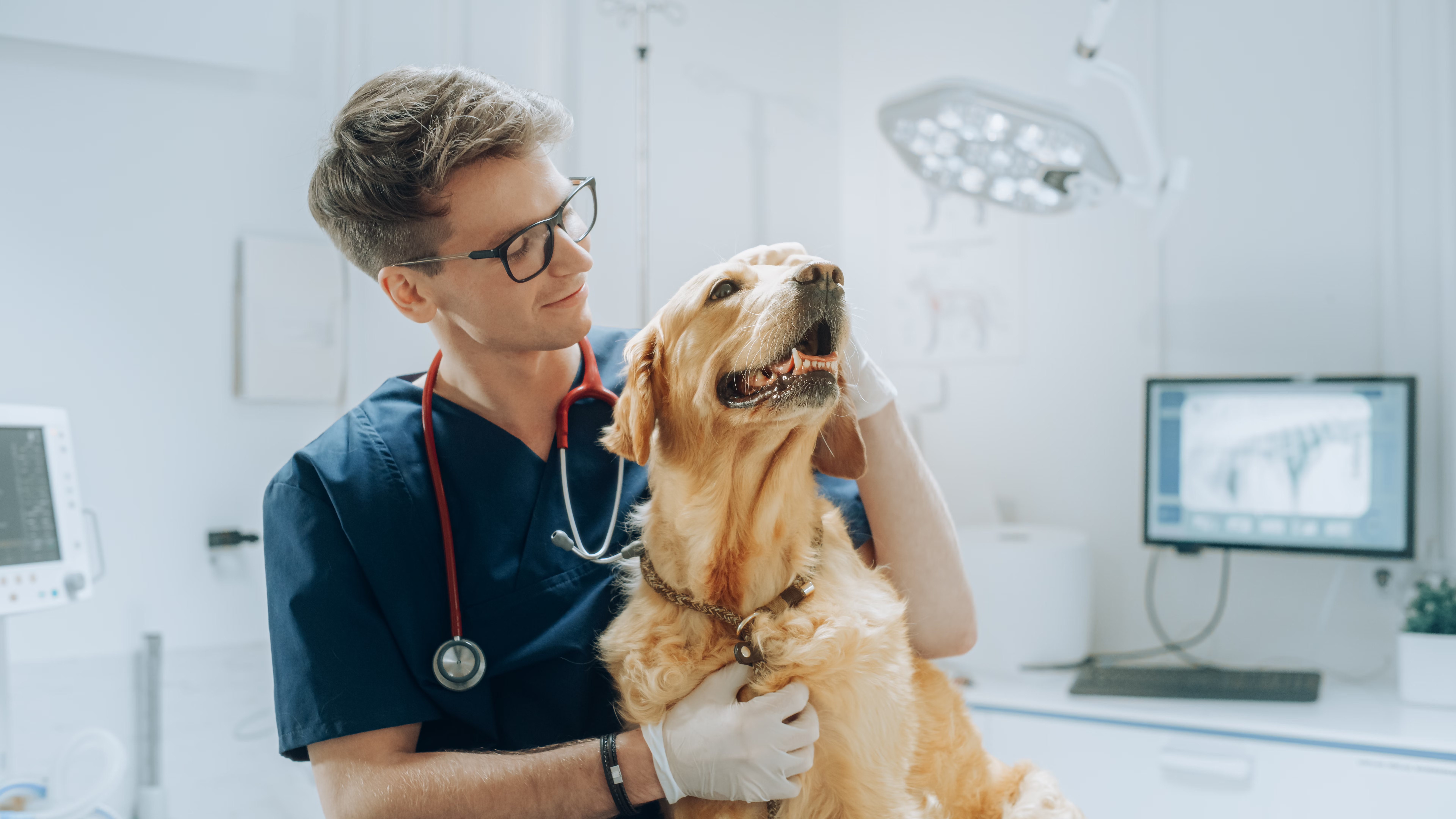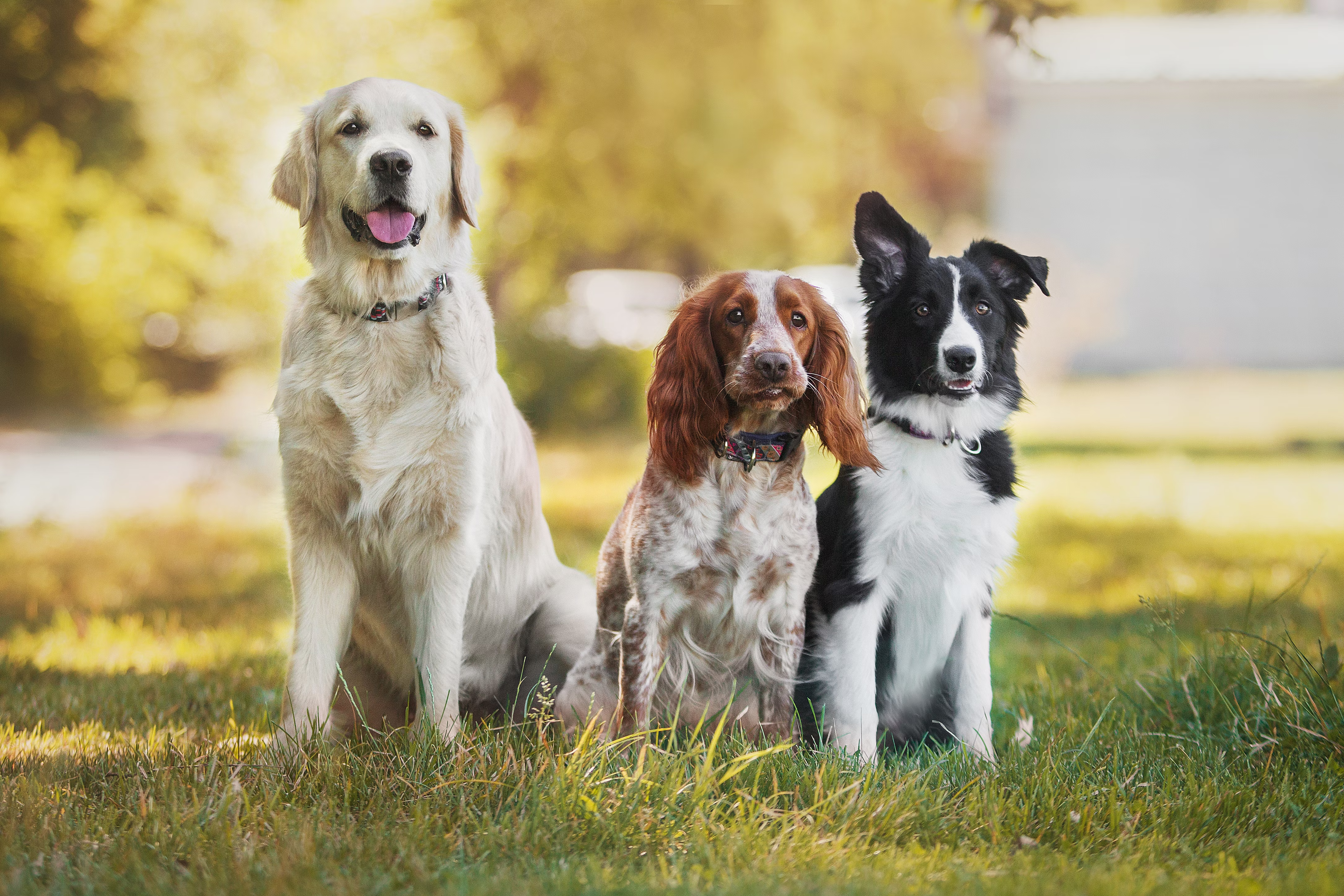The decision to spay or neuter a dog is an important one for pet parents. Not only does it have health implications for your pup, it also plays a significant role in managing the pet population. To help you make an informed choice, you must keep in mind what breed or breed mix your dog is, their likely adult size, and if you might breed your dog. Let’s take a look at the benefits of these procedures and the health risks to keep in mind as you make your decision.
The benefits of spaying and neutering
Spaying female dogs and neutering male dogs prevents them from reproducing. And since the ASPCA reports that over 3 million dogs enter shelters annually in the U.S., spaying and neutering can reduce unplanned litters that contribute to the homeless pet population. But there are other health and behavioral benefits to these procedures.
Health benefits of spaying and neutering
- Reduced risk of certain cancers: Female dogs that are spayed, particularly if the procedure is done before their first heat cycle, have a lower risk of mammary (breast) and uterine cancer. Neutered male dogs are protected against testicular cancer and certain prostate diseases.
- Reduced risk of pyometra: Pyometra is a life-threatening uterine infection. Female dogs that have a complete ovariohysterectomy before developing the infection eliminate their risk of it occurring.
- Increased lifespan: Some studies have shown that spayed and neutered dogs live longer on average. However, these studies do not account for other factors that may contribute to shorter lifespans.
- Eliminate risk of pregnancy complications: Carrying and giving birth to puppies comes with risks to female dogs. By avoiding pregnancy altogether, your dog avoids the chance of these complications.
Behavioral benefits of spaying and neutering
- Reduced urine marking: Dogs that have been spayed or neutered may be less likely to engage in urine marking. However, timing may be a factor. Dogs that are neutered later in life and have established marking behaviors may continue them post-surgery.
- Reduced roaming: Spayed and neutered dogs are less likely to roam, as they won’t have the instinctual need to find a mate.
- Reduced mood changes: Female dogs may be more irritable, restless, or anxious when they are in heat.
- Lower aggression: In some cases, neutering can reduce hormone-driven aggression, particularly in male dogs.

Types of spay procedures
- Ovariohysterectomy: The most common method, this procedure removes the ovaries, Fallopian tubes, and uterus. The dog cannot become pregnant, but hormones are significantly altered with removal of the ovaries.
- Ovariectomy: In this procedure, only the ovaries are removed, leaving the uterus intact.
- Laparoscopic spay: Using a minimally invasive technique, this option involves small incisions and the use of a camera to perform an ovariectomy or ovariohysterectomy. It’s associated with reduced pain and quicker healing but is usually more expensive.
- Ovary-sparing hysterectomy (hysterectomy): This is an uncommon procedure. Similar to a vasectomy, it spares the ovaries, but removes the ability for a female dog to become pregnant by removing all of the uterus, part of the Fallopian tubes, and the cervix. It is similar to a traditional ovariohysterectomy in terms of the surgical incision and pain control needed, but the dog’s hormone-production remains intact, and risk of mammary (breast) cancer is not reduced.
Types of neuter procedures
- Traditional castration: The most common method, this involves removing both testes through an incision near the scrotum. It’s effective in preventing reproduction and reducing hormone-driven behaviors.
- Vasectomy: In this less common procedure, the tubes that carry sperm are severed, leaving the testes intact. While it prevents a male dog from impregnating a female, it doesn’t reduce testosterone-driven behaviors like marking or roaming, or hormonally-driven cancer or prostate disease.

General surgical risks and considerations
Although routine surgical procedures are often necessary and beneficial, they’re not without risks. It’s important to weigh these factors and discuss them with your veterinarian:
Surgical risks
- Anesthesia complications: As with any surgery, there’s a small risk of adverse reactions to anesthesia. Your veterinarian will evaluate your dog’s health to minimize this risk.
- Infection or poor wound healing: Post-operative infections are rare but can occur. Following your veterinarian’s care instructions and monitoring for signs of complications can reduce the risk of a serious impact.
Genetic considerations
- Bleeding disorders: Certain breeds are prone to von Willebrand disease, a genetic bleeding disorder that impacts blood clotting. Dogs with this condition require special precautions during surgery to prevent excessive bleeding.
- MDR1 drug sensitivity: Dogs with mutations in the MDR1 gene may be more sensitive to certain drugs used during surgery. Testing for this mutation beforehand allows your veterinarian to adjust medications to reduce risk of complications.
A Wisdom Panel Premium dog DNA test can screen for these and other health genetic risks.
The decision to spay or neuter
Researchers are increasingly noting that breed, size, and sex of the dog, as well as the time of surgery, have significant impacts on the benefits and risks associated with sterilization surgery. In particular, large breed purebred dogs or mixed-breed dogs above about 45 lbs appear to be at higher risk of experiencing negative long-term effects associated with spaying and neutering. However, choosing to keep your dog intact, even if you do not choose to breed your dog, comes with increased responsibility and considerations in caring for your dog. For some pet parents, vasectomy for male dogs, rather than castration, may be a good choice to keep hormones intact while reducing other risks, including unplanned litters.
Ultimately, the decision on if or when to spay or neuter your dog should be a personalized one based on your dog’s breed, size, and sex—as well as an honest assessment of your ability to prevent unplanned litters. All of these considerations should be discussed well in advance with your veterinarian.
Potential health trade-offs
- Joint disorders in large breeds: Some research suggests that early spaying and neutering in large or giant dogs may increase the risk of joint disorders like hip dysplasia, elbow dysplasia, or cruciate ligament tears. Breeds known to be affected include Golden Retrievers, Labrador Retrievers, and German Shepherd Dogs. Waiting until the dog’s growth plates close (usually around 12-18 months) can mitigate this risk.
- Cancer risk: Certain cancers are known to occur with greater frequency in spayed or neutered dogs, or dogs neutered below a certain age, including lymphoma, mast cell tumor, hemangiosarcoma, and osteosarcoma, especially well-studied in the Golden Retriever.
- Urinary incontinence: Defined as the loss of voluntary control of urination, urinary incontinence (UI) is a problem primarily seen in large breed female spayed dogs, with an estimated incidence of 11-20%. The urethral sphincter is affected by the changes in hormones induced by traditional ovariohysterectomy, and some breeds appear to be at higher risk of UI. Time of spay appears to play a role in risk.
- Weight gain: Spayed and neutered dogs experience hormonal changes that predispose them to weight gain. A balanced diet, regular exercise, and regular veterinary check-ups (which dogs need regardless of their spay or neuter status) can help your pup maintain a healthy weight.

When to spay or neuter
In the past, conventional wisdom recommended dogs be spayed or neutered around 6 months of age. However, as research continues to shed light on the implications of these procedures, it is becoming more clear that determining the right age to spay or neuter depends on several factors, including your dog’s size, breed, and health.
For example, a study published in Frontiers examined 35 different dog breeds and the impact of spay or neuter timing on the incidence of joint disorders, certain cancers, and urinary incontinence. Results for small breed dogs showed sterilization had no increased risk of joint disorders, while Boston Terriers and Shi Tzus had increased risk of cancers.
For larger breeds in this same study, timing of the spay or neuter procedure had an impact on incidence of both joint disorders and cancer. Based on these findings, they published guidelines for age of spay or neuter for the breeds they studied. For example, they suggest male Beagles and Rottweilers, and female Collies and English Springer Spaniels, be neutered or spayed at >11 months of age. However, they recommend male Bernese Mountain Dogs and German Shepherds and female Boxers and Doberman Pinchers be neutered or spayed at > 23 months of age. For a complete listing of their guidelines, check out the full study.
For some breeds, there is unfortunately little data to support the decision process for best time of spay or neuter. If this is the case for your dog’s breed or predominant mix, you can look for a closely-related genetic breed that does have adequate data available to help inform your choice.
In addition to health considerations, there is often the desire to balance the societal implications of unintended litters—and preventing intact dogs from breeding is challenging. For all of these reasons, there is no one-size-fits-all answer for the right time to spay or neuter your dog. A conversation with your veterinarian is an important step in deciding what is best for you and your pet.
Final thoughts
By understanding the benefits, options, and risks, you can make a spay or neuter decision that’s right for your pet. But you don’t have to make the determination alone. It’s best to partner with your veterinarian so they can provide personalized recommendations based on your dog’s specific needs.
Additional resources:














